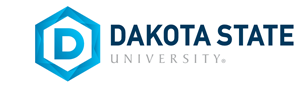Date of Award
Fall 11-2020
Document Type
Dissertation
Degree Name
Doctor of Philosophy in Cyber Defense (PhDCD)
Department
Computer Science
First Advisor
Ashley Podhradsky
Second Advisor
Kevin Streff
Third Advisor
Omar El-Gayar
Fourth Advisor
Cynthia Hetherington
Fifth Advisor
Trevor Jones
Abstract
The dark web is the hidden part of the internet that is not indexed by search engines and is only accessible with a specific browser like The Onion Router (Tor). Tor was originally developed as a means of secure communications and is still used worldwide for individuals seeking privacy or those wanting to circumvent restrictive regimes. The dark web has become synonymous with nefarious and illicit content which manifests itself in underground marketplaces containing illegal goods such as drugs, stolen credit cards, stolen user credentials, child pornography, and more (Kohen, 2017). Dark web marketplaces contribute both to illegal drug usage and child pornography. Given the fundamental goal of privacy and anonymity, there are limited techniques for finding forensic artifacts and evidence files when investigating misuse and criminal activity in the dark web.
Previous studies of digital forensics frameworks reveal a common theme of collection, examination, analysis, and reporting. The existence and frequency of proposed frameworks demonstrate the acceptance and utility of these frameworks in the field of digital forensics. Previous studies of dark web forensics have focused on network forensics rather than hostbased forensics. macOS is the second most popular operating system after Windows (Net Marketshare, n.d.); however, previous research has focused on the Windows operating system with little attention given to macOS forensics.
This research uses design science methodology to develop a framework for identifying host-based artifacts during a digital forensic investigation involving suspected dark web use. Both the Windows operating system and macOS are included with the expected result being a reusable, comprehensive framework that is easy to follow and assists investigators in finding artifacts that are designed to be hidden or otherwise hard to find. The contribution of this framework will assist investigators in identifying evidence in cases where the user is suspected of accessing the dark web for criminal intent when little or no other evidence of a crime is present.
The artifact produced for this research, The Dark Web Artifact Framework, was evaluated using three different methods to ensure that it met the stated goals of being easy to follow, considering both Windows and macOS operating systems, considering multiple ways of accessing the dark web, and being adaptable to future platforms. The methods of evaluation v included experimental evaluation conducted using a simulation of the framework, comparison of a previously worked dark web case using the created framework, and the expert opinion of members of the South Dakota Internet Crimes Against Children taskforce (ICAC) and the Division of Criminal Investigation (DCI).
A digital component can be found in nearly every crime committed today. The Dark Web Artifact Framework is a reusable, paperless, comprehensive framework that provides investigators with a map to follow to locate the necessary artifacts to determine if the system being investigated has been used to access the dark web for the purpose of committing a crime. In the creation of this framework, a process itself was created that will contribute to future works. The yes/no, if/then structure of the framework is adaptable to fit with workflows in any area that would benefit from a recurring process.
Recommended Citation
Kulm, Arica, "A Framework for Identifying Host-based Artifacts in Dark Web Investigations" (2020). Masters Theses & Doctoral Dissertations. 357.
https://scholar.dsu.edu/theses/357
Included in
Databases and Information Systems Commons, Information Security Commons, Systems Architecture Commons

